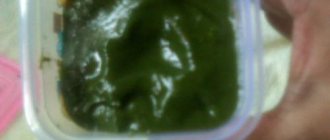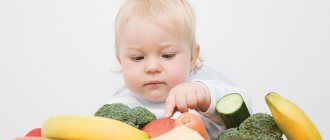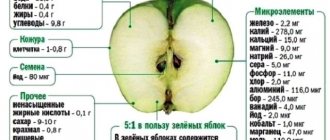07/29/2020 Reading time: 3 min 66420 0
The earliest date for starting complementary feeding is 4 months1. When exactly to introduce your baby to “regular food”, check with your pediatrician. Complementary foods cannot be introduced2:
- during illness,
— 3-5 days before and after vaccinations.
What is complementary feeding?
Complementary feeding is everything that a baby eats up to one year, except for mother's milk and infant formula1.
When to give complementary foods?
If the child does not show much interest in the environment during the first three months of life, then by four months the picture changes radically. He becomes more active, recognizes familiar faces, smiles, tries to grab and examine objects in front of his eyes. By this age, breast milk becomes insufficient to meet the body's nutritional needs. There is a need to think about the first complementary foods.
Pediatricians recommend doing this at the age of 4-6 months. There is no need to rush with complementary foods. The first three months of life, the child’s digestive tract is still very weak and is not ready to meet “adult” foods. Early complementary feeding is fraught with digestive problems and the development of allergic reactions. But by four months the picture changes. Moreover, the baby's ejection reflex disappears and he can swallow thicker food than breast milk.
As for late complementary feeding, it is also fraught with serious consequences. Firstly, the child’s body begins to experience a deficiency of vitamins and vital elements. This can lead to developmental delays. Secondly, this approach will slow down the development of chewing skills and, possibly, provoke speech problems in the future.
Thus, feeding complementary foods too early or too late brings with it many problems. The optimal period is 4-6 months of age. However, before introducing “adult” food, you need to consult with a pediatrician and focus on the individual characteristics of your baby’s body.
Two main principles for introducing complementary foods
The main thing to keep in mind before “rolling up your sleeves”
- Complementary foods are introduced to prepare for the common table (that is, the baby must learn to eat on his own)
- Complementary feeding is necessary for the formation of correct eating behavior
This is the most important of all the variety of reasons to start introducing complementary foods. Of course, there are exceptions in terms of health, but we are talking about the standard situation.
Since the first stage of introducing complementary foods is precisely preparation, not a single breastfeeding during this period (according to WHO up to 1 year) should be removed or replaced with complementary feeding products.
And the second conclusion is that eating behavior should always be given priority. No cartoons, running after a child with a spoon, and especially no violence or blackmail.
Yes, at the first stage you will stuff the spoon in, it's not difficult. It will be much more difficult to retrain a 1.5-year-old child to eat on his own or, even worse, to form a food interest from scratch if the child never begins to eat properly or goes into refusal of food (this is an extreme case).
I will say in the words of Dr. Komarovsky: “A hungry child eats, but a tired child sleeps.” This reflects the essence of properly formed eating behavior: if you want to eat, I eat. Of course, this is more typical for an older child, when all stages of complementary feeding have been completed. And the right tactics at the very beginning are the key to successful implementation of this rule in the future.
So, let’s remove all the garbage from our heads (including that imposed by pediatricians working according to Soviet guidelines) and move on to the tactics of first complementary feeding.
What should new parents remember?
There are simple rules that allow you to carry out the first complementary feeding without complications. Young parents should remember them:
- Assess the child's physical condition. He must be able to sit alone or with support. Also, the baby should not push the spoon with food out of his mouth. The child must have an interest in food.
- Introduce new foods only during the day. It is best to do this in the first half of the day. This way you will be able to notice signs of allergy development in time.
- Give only simple foods. For the first time, purees and porridges consisting of only one ingredient, for example, broccoli or zucchini puree, are suitable. There should be no other impurities.
- Start with the smallest portion. For the first time, a portion the size of half a teaspoon is enough. The child will be able to appreciate the taste of the new product, and you will be able to monitor its condition. The serving size should be increased gradually over the course of a week, bringing it to 30-40 grams.
It is very important that the child is completely healthy before starting complementary feeding. You should not introduce your baby to new foods if he has signs of illness, has suffered serious stress, or has been vaccinated.
Principles of introducing complementary foods
When breastfeeding, complementary feeding at three months is carried out before breastfeeding. Gradually reduce the amount of breast milk and increase the amount of new food. In a few days, it will be possible to replace 1 breastfeeding with complementary feeding.
Important! Only one product is introduced into the diet at the beginning. Start with minimal dosages.
The child is given ½ teaspoon of the new product. The next day, add another 5 grams. Gradually, the volume of food increases to 50-150 grams. The whole process takes 7-10 days, if no deviations are observed, and the baby feels well and eats complementary foods without problems.
General recommendations
First complementary foods during breastfeeding at 3 months (scheme):
- 6 a.m. – 200 ml of breast milk;
- 10 a.m. – juice 5-20 grams and breast milk;
- 14 hours – breast milk, ½ teaspoon of puree;
- 18 hours – puree and breast milk;
- 22 hours - breast milk.
Only after the baby has adapted to monocomponent puree can you begin to introduce him to another product. During the process, it is important to monitor the health of the baby - whether allergies, diarrhea, or bloating have occurred. In case of undesirable reactions of the child’s body, it is necessary to stop introducing this product into the diet.
Differences in complementary feeding between artificial and infants
Babies who are bottle-fed are more ready for new foods than infants. The artificial digestive organs are already accustomed to the coarse mixture. It is important to consider that formula milk cannot fully cover all the child’s nutritional needs. Therefore, doctors recommend starting to give complementary foods to a bottle-fed baby at 3 months, and to a breastfed baby later. Mom needs to take into account the peculiarities of artificial feeding.
Where to start complementary feeding?
Where to start complementary feeding at three months while breastfeeding? The same product should not be given several times a day. It's better to start with natural juice. It is required to refrain from eating apricots and pears. They cause diarrhea, so you should be very careful with these fruits. Any new product should be given ½ teaspoon.
The best options are:
- zucchini;
- apples;
- potato.
On a note! After the juice, vegetable and fruit purees are introduced, as well as dairy-free cereals that do not contain gluten. This kind of nutrition is especially useful for artificial babies.
Applesauce is most often used as a first complementary food.
When should you stop feeding?
Many mothers think that if no problems arise after the first spoon of a new product, then they can increase its consumption. This is fundamentally wrong. The baby's weak digestive system is not able to cope with such food. Stool disorders, flatulence, dysbacteriosis, and allergies develop. It is necessary to stop taking the drug if these reactions occur, as well as if the temperature rises and shortness of breath develops.
4-6 months: time to get acquainted with new products
Once you are sure that your child is ready to be introduced to new food, all that remains is to choose which product to use for this purpose. If your baby has problems with stool or excess weight, preference is given to vegetable purees. In all other cases, you can start with both vegetables and cereals. If in doubt, be sure to consult your pediatrician.
In order to form the correct eating habits in the baby, he is transferred to five meals a day. Night feedings should be gradually reduced to a minimum. However, do not forget that it is quite normal for a child under one year old to wake up at night. You should also not force feed your baby. If you notice that he is already full, stop feeding, even if the portion was not completely eaten.
Important! There is no need to try to feed your baby a lot of purees before bed in the hope that he will sleep through the night. This way you can provoke problems with the gastrointestinal tract.
Once a complementary feeding product has been selected, begin to gradually introduce it into your baby’s diet. To start with, half a teaspoon will be enough. For a week, give only the chosen dish, do not add anything new and carefully monitor the child’s reaction. If familiarization with the product was successful, you can begin introducing a new component. This is done according to the same scheme.
If a child refuses to eat a new dish, it can be mixed with an already familiar one, gradually increasing the total portion size. With age, it will be possible to introduce new components faster, but while the child’s immune and digestive systems are not sufficiently strong, there is no need to rush. If you started with vegetable purees, then after the child’s body adapts to them, you can begin introducing cereals.
Some children categorically refuse to try new foods. This usually applies to vegetable purees that have a neutral or specific taste. There is no need to force your baby to eat, but you also don’t need to give up trying to “make friends” with a new dish. Gradually he will get used to the unfamiliar taste. In some cases, adaptation to a new dish can take 7-14 days.
Features of the introduction of cereals
You need to start introducing complementary foods with dairy-free, gluten-free cereals. Buckwheat, corn and rice are suitable. It is best to give industrial cereals enriched with iron and other vitamins. Homemade porridges are less nutritious. In addition, not knowing the technology for their preparation can cause harm to a fragile stomach. The finished product should be diluted with breast milk or formula. Porridge diluted with water has much less nutritional value. If the baby does not have allergies, you can add a little butter to the porridge.
Features of introducing meat and fruit purees
You should start introducing meat no earlier than 6 months. Rabbit or turkey puree is suitable for complementary meat feeding. Meat contains a lot of iron, which is necessary for a child's body. By adding meat puree to vegetable puree, you greatly facilitate the process of assimilation of this element.
Fruit puree can be introduced earlier, but pediatricians recommend introducing it after meat puree. Fruits help avoid bowel problems and also increase appetite. Very often, fruit mixtures are added to porridges, which improves their taste.
Important! If a child suffers from food allergies, the rules for introducing complementary foods for him do not change. You should start getting acquainted with new products with minimal portions. It is important to exclude highly allergenic foods, such as fish and cow's milk.
It is possible to introduce foods with a high risk of developing allergies only after the baby’s body has fully adapted to low-allergenic foods. In some cases, consultation with an allergist may be required. By 5 months, the volume of one serving averages 200 ml.
Physiology of a baby at 3 months
A three-month-old baby can start feeding both breastfeeding and bottle-feeding.
The main difference between early ages is the insufficient development of the digestive system. The baby's weak digestion does not allow him to be fed any foods. The body of a 3-month-old baby is adapted to digest only mother’s milk and adapted formulas. A three-month-old baby has a poorly developed swallowing reflex. The mucous membrane of the digestive organs is not yet sufficiently filled with active bacteria. It is recommended to feed a baby at three months only with breast milk or adapted formulas.
Important! The first year of life is a real test for the human body. The baby is actively exploring the world, his biological reactions are modified and intensified, and all systems adapt to the external environment on a daily basis.
What is the difference between supplementary feeding and complementary feeding?
Complementary feeding is a gradual expansion of the baby's diet at 3 months. It is given in addition to breast milk. The first should include juices. They should be given in minimal quantities. The juice provides the child with the necessary nutrients and energy.
New nutritional components help a baby at 3 months adapt to adult food. However, it is given in small quantities so as not to cause the development of pathology in the baby. This is a kind of training for the digestive system, providing the child with useful substances without compromising his health.
Supplementary feeding is the amount of food that is given to a baby at 3 months when the amount of breast milk is insufficient. It is allowed to supplement the child's feeding with donor milk or formula. Supplementary feeding is present only with mixed feeding. It is widely used for reduced lactation. A constant lack of breast milk leads to the development of weakness, impaired immune function, and weight loss.
Is your baby ready to start complementary feeding at 3 months?
If you have a strong and healthy baby, then at 3 months the baby does not yet need complementary feeding. Experts recommend delaying complementary feeding until 5-6 months. During this period, the digestive system will become more functional. After the juices, the baby is introduced to the first cereals and one type of vegetable. Many doctors believe that you should start doing this when your first teeth appear. This indicates that the baby is already ready to try new food. Today on the market there are a large number of different baby purees adapted to the children's body.
The main signs that the baby is ready for complementary feeding:
- sits confidently;
- shows interest in food;
- The reflex to push away thick food has disappeared.
What to give a seven month old baby?
By this time, new foods are introduced into the diet. The baby has already grown up enough, and his feeding schedule should be similar to that of an older child. In simple words, he should have three main meals and two additional ones: breakfast, second breakfast, lunch, afternoon snack and dinner. However, there is no need to demand too much from a seven-month-old baby. He still wakes up at night, since this is a physiological norm for him.
At this age, children are given a taste of the yolk of a chicken egg. To begin with, they give 1⁄4 pieces. If a child refuses to try an unfamiliar product, it is mixed with porridge or vegetable puree. When including yolk in the menu, you must carefully monitor the child’s reaction.
In addition to the yolk, at the age of 7 months you can start giving your babies special baby cookies. No more than 1-2 pieces per day. It is important to understand that cookies are not a complete food. This is a dessert that is served as an afternoon snack or after a full lunch.
If new products do not arouse your child’s interest, try mixing them with familiar and tried ones. For one meal, the baby should eat about 150 grams of porridge or puree. However, everything is individual here; you need to look at the physiological characteristics and needs of your child.
Myth - Start with jarred puree
This myth is actively instilled by the same pediatricians (not all of them, we met), scaring mothers with pesticides in store-bought zucchini. The WHO recommendations clearly state:
“Ideally, infants should eat the same food that the whole family eats.”
We are talking about healthy food without salt, sugar and seasonings typical of the area of residence, and not French fries and burgers. Therefore, if the mother prepares a common table, all seasonings are introduced after the baby’s portion has been set aside. Next, the baby’s portion is brought to the desired consistency.
“Carers should select appropriate foods and prepare them in a way that maximizes their nutritional value.”
For example, if these are vegetables, then “steaming” is preferable to boiling. Therefore, if you have time and desire, and even more so if you have access to natural farming, a blender and a steamer are in your hands.
Most importantly, read the basic cooking guidelines if you cook yourself. And if you decide to stick with canned food, analyze the food aisles in your stores, choose the highest quality without starch, flour and other surprisingly unnecessary ingredients and purchase according to the complementary feeding scheme.
However, the same WHO recommendations say that if you choose industrial jars, you should still serve food from a common table “to accustom the child to a greater variety of taste sensations and textures.” Again, food in pieces should be introduced from 7 months, and in a one-component vegetable puree the food will be in the form of a puree without pieces. Therefore, you will still have to cook at least vegetables for microdoses.
What to give an eight month old baby?
Eight-month-old babies become more active. They explore the world around them with interest. At this age, they begin to pick up food with their hands, try to drink from a mug, and show interest in cutlery. This behavior must be supported in every possible way. By this time, children already know how to chew food, which means it’s time to change the consistency of the dishes. Food does not need to be pureed. Now fruits, vegetables and meat can be cut into pieces.
By 8 months, the immune system and digestive system are already sufficiently adapted to new food, and you can try giving your baby fish. Take low-fat varieties, for example, carp, pike perch, salmon, pollock, hake and cod are suitable for this purpose. You don't need to give too much. A couple of times a week is enough. Approximately 30 grams of fish are crushed and given pure or mixed with vegetable puree. Remember that fish is a food that can trigger the development of allergies, which means you need to carefully monitor your child’s reaction.
In addition to fish, cottage cheese appears on the menu at this age. It is rich in calcium and vitamins. Give no more than 50 grams of product per day. Natural yoghurts, kefir and other fermented milk products are slowly being introduced. They are good for digestion. Samples begin with a couple of spoons, and within 7 days the serving volume increases to 150-200 milliliters.
An eight-month-old baby grows quickly and his body requires a lot of nutrients. His diet should be varied.
Start date for introducing complementary feeding to a child
When to introduce complementary foods? I already wrote partly about this in a general article. Here I will be guided by the WHO guidelines stated above. It's written there in black and white.
“The beginning of introducing complementary foods should be considered the age of 6 months, and not the beginning, but the end of 6 months or 26 weeks.” It is important to know the main indicators of readiness for complementary feeding that differ from age.
Not the beginning of 6 months, but the child reaching the age of 6 full months. Therefore, if your pediatrician once again prescribes complementary feeding for you from 4 months without serious medical reasons, you can smile and keep a printout from this manual in your pocket. Uncritical weight loss does not apply here. This is a very complex topic and needs to be discussed separately. Babies should gain at least 125 grams per week during breastfeeding, and not 700-800-800... per month as in their tables from Soviet times.
Dear mothers, let’s exhale. You have a whole month from 6 to 7 to start introducing complementary foods. It is absolutely not necessary to do this at 21-22 weeks (page 220 of WHO recommendations, chapter 8).
It is better not to delay beyond 8 months, since this will already concern the development of certain chewing skills, the development of taste perception, and not just the inability of milk to provide all the needs of a rapidly growing body for micro- and macroelements.
Plus, by 7 months, in general, the development of the nervous system allows the child to master the following skills:
- biting and chewing
- cleaning a spoon with your lips
- lateral movements of the tongue
- moving food to the teeth
All this speaks about the child’s ability by the age of 7 months. try food in pieces, and not just in puree form. You need to start with microdoses; more about this in the general article.
For some reason, complementary feeding consultants, at least those that I have met, do not focus on this period in weeks. It seems to me that this is very unnecessary, since such a gap will allow the mother to calmly determine the degree of readiness of the baby for the introduction of complementary foods. And this is also very important for the formation of proper eating behavior.
Feeding too early can negatively affect the formation of proper food interest . The child’s unpreparedness, in turn, can lead to the mother’s nervousness, since the child will refuse complementary feeding, or the gastrointestinal tract will malfunction, then persuasion, dancing with tambourines, and so on. But all this will not solve the problem. This is already a consequence.
It is important to determine how ready your child is for complementary feeding . Not ready - postpone the start to 6.5 - 6.7 months. It's not critical.
2 clear signs of readiness to introduce complementary foods
- Gastrointestinal readiness
- Nervous system readiness (food interest)
I am sending an article in which I talk about how to understand that the gastrointestinal tract has matured and food interest has appeared as part of the course “Complementary feeding wisely”
If you do not want, or cannot for some reason, take the “Complementary feeding wisely” course, I duplicate the link here. The article at the link will open in a new window, if you haven’t read it yet, read it and go back
An example of food interest. The child not only took the spoon, but “reaches” for the food.
Nutritional features from 9 to 12 months
The menu of a nine-month-old baby is already quite varied and includes all the main food groups. However, parents should still constantly expand his diet in order to introduce him to new foods. At 9 months, steamed cutlets can be given instead of meat purees. Ready-made dishes can be supplemented with herbs, which is also very healthy.
It is at this age that many parents make the main mistake - they transfer the child to the adult table. As a result, the baby begins to develop problems with the stomach and intestines. If you want your child to be healthy and strong, you need to learn a number of simple rules:
- Never sweeten or add salt to prepared foods, even if their taste seems bland to you.
- Take your time introducing fruit juices. Put off tasting them for up to a year. As for carbonated drinks, they should be completely excluded from the child’s diet.
- Do not give your baby nuts, gummies, or other small or hard foods, as they may pose a choking hazard.
- Under no circumstances should you give whole apples and pears to make your baby “scratch” his teeth. He may bite off a piece of an apple and also choke.
- There is no need to replace sugar with honey. In some cases, natural honey does even more harm, causing serious health problems.
- Do not introduce semolina porridge into your diet for up to a year. It doesn't have many nutrients, but it is full of gluten.
Rules for introducing juices
By the age of one year, you can introduce your child to juices. It is best to offer them as a dessert after the child has eaten the main course. You can also give juice as an afternoon snack. Excessive consumption of sweet juices leads to disruption of proper taste habits and can also provoke the development of dental problems.
First feeding serving size
Your pediatrician will most likely tell you that you need to increase the serving size to 200 grams. At the preparatory stage, this is completely optional! You remember, not a single breastfeeding (formula) can be replaced. This statement also takes its roots from pediatric tables, where a child of 6 months should consume 1 liter of food per day. We divide this into 5 doses - we get 200 milliliters
But we are talking about breast milk (formula). You breastfeed your baby on demand (if formula, then by gram, but also without changing the schedule before complementary feeding). Accordingly, this recommendation has no weight until you start replacing one feeding with complementary foods, and this is definitely not the first stage. Unless, of course, you decide to quit breastfeeding early. I’m talking about those mothers who plan to breastfeed for at least a year (not even until 2, as WHO consultants now recommend, although in the manual not everything is so strict and according to the mutual desire of mother and baby).
The main mistakes of parents
According to statistics, only 45% of young parents adhere to doctors’ recommendations regarding the introduction of complementary foods. As a result of the wrong approach, children do not receive enough nutrients and microelements necessary for full growth and development. Let's look at the main mistakes using specific examples.
- Premature introduction of new products. The introduction of complementary foods before 3 months increases the risk of developing excess weight, gastrointestinal diseases, and may also serve as a prerequisite for the development of diabetes.
- Postponing complementary feeding until later. Lack of complementary feeding after six months leads to a lack of microelements and nutrients. There may be developmental delays or problems with eating behavior in the future.
- Introducing too large portions. Because of this, the child may refuse breast milk or formula, which until a certain time are his main source of nutrients. In addition, the fragile gastrointestinal tract is simply not ready for such stress.
- Feeding only pureed foods for too long. After six months, the baby develops a chewing reflex. At this age, food can be cut into pieces. Refusal of solid foods can lead to digestive problems, as well as difficulties with speech development.
- Make the child finish the entire portion. If the baby shows with all his appearance that he is full, feeding should be stopped. Otherwise, overeating may cause vomiting or stomach upset.
- Transfer the baby to general nutrition at 10-12 months. “Adult” dishes contain a large amount of fats and other elements that a child’s stomach is not able to completely digest.
- Give harmful foods. Almost 80% of parents already in the first year of a child’s life give him a taste of chocolate, cookies, sausage, dumplings and other dangerous foods. These products are dangerous not only for babies, but also for adults. They also lead to disruption of healthy eating habits.
When is early complementary feeding not needed and why is it dangerous?
Complementary feeding at the age of 3 months while breastfeeding can cause digestive disorders, flatulence and diarrhea. This is due to the fact that the baby’s digestive system, well adapted to breast milk, cannot cope with coarser foods.
Early food causes the development of many diseases of the gastrointestinal tract. This should definitely be taken into account when planning to give a child new food at 3 months. To such an extent there is very often no need. It’s better not to rush and wait another 1-2 months. Otherwise, the consequences of early complementary feeding for children with normal weight and height may be negative.
Early complementary feeding can cause colic and flatulence
What do you need to know to create the right menu?
Proper complementary feeding and following nutritional recommendations for children can help you avoid many mistakes and problems in the future. When creating a menu, pediatricians recommend adhering to the following rules:
- The child should have five meals a day: breakfast, lunch, dinner, second breakfast and afternoon snack.
- During one feeding, the baby should eat 200-300 grams of food. However, you cannot feed a child against his will, even if the portion was not eaten.
- It is very important to organize a proper drinking regime. Before a year, a baby should drink a liter of water, after a year - about one and a half liters a day. However, do not forget to take into account the individual characteristics of the child’s body.
- The menu should be varied. Include vegetables and fruits at every main meal.
- Remember that meals must be nutritious enough to cover the body's needs for the necessary elements.
- A child should drink 450 ml of milk and fermented milk drinks per day.
- Porridge and cereal dishes should not be given more than once a day.
- Give bread no more than a couple times a day.
- Meat dishes are given 1-2 times a day. Their total volume per day is 70 grams. Fish dishes are given no more than 2-3 times a week in a total amount of 200 grams.
- During the week you can give 2-3 eggs, but no more.
- The consistency of the dishes must fully correspond to the physiological characteristics of the child’s development.
- Remember that sweet juices and compotes are not suitable for quenching thirst.
It is very important to understand that the menu is compiled individually for each child. Serving sizes may vary depending on the physiological characteristics of the body. The standard serving is 200 grams. The baby should eat this amount of food at one time. This includes both purees and milk.
A properly structured diet is the key to good health for your child. If you have difficulty creating a menu or don’t know what products to use for your first complementary foods, be sure to consult with your pediatrician. Always take into account the individual developmental characteristics of your baby.
You will learn more about feeding your baby, as well as much more, by enrolling in our school for expectant mothers.
Expanding the child's menu by month
| Feeding time | Sample menu | |||
| 4-5 months | 6-7 months | 8-9 months | 10-12 months | |
| 6:00-7:00 | Formula milk | |||
| 9:00-11:00 | Water porridge + fruit juice + formula supplementation | Milk porridge with butter + egg yolk + fruit juice | Milk porridge with butter + egg yolk + fruit puree | Multigrain milk porridge with butter + slices of boiled vegetables + egg yolk |
| 12:00-14:00 | Formula milk | Vegetable puree with vegetable oil + meat puree + supplementary food mixture | Vegetable soup + vegetable puree with vegetable oil + meat/fish meatballs | Vegetable side dish with vegetable oil + steamed meat/fish cutlets + cottage cheese casserole |
| 17:00-19:00 | Vegetable or fruit puree + supplementary formula | Fruit puree + cottage cheese + kefir + crackers | Fruit puree + kefir + cottage cheese + bagel | Yogurt with fruit puree + biscuits |
| 21:00-22:00 | Formula milk | |||
Remember to adhere to acceptable portion sizes so as not to overfeed your baby with potentially dangerous foods, such as cottage cheese. From 8 months, main meals are organized 3 times a day, but no one has canceled light snacks, especially for a growing body. Always keep baby cookies, natural juices, fruits, and kefir in the refrigerator and take them with you on walks.
The main and most important rule for introducing complementary foods!
- Complementary foods are not forced! If you see, the child categorically does not eat what is offered, spits, is hysterical (not just pushes it out with his tongue, but does not even try to taste it), no matter how the grandmothers, pediatrician, husband and even the neighbor who has a 6-month-old child insist. I’ve already eaten a baked apple, ☝️ leave this idea for at least a week - or even two. No violence, no pushing, or worse, no holding at the table. This is an indicator that the time has not yet come for your baby.
- Form your first food interest! Sit on your knees when you eat, show food, spoons, plates. Let him touch everything. Just remove anything dangerous, sharp, hot, or valuable and expensive from the access area. Children learn so quickly that you won’t even notice how your baby picks up a spoon. Even if you don’t remember anything written above, this point is the most important. Understanding that everything has its time will save your nerves. And for a baby, a calm and affectionate mother is more important than a belly stuffed according to outdated rules.
Recipes for preparing vegetable puree for first feeding
First food: vegetable puree. Just a few weeks ago, your baby only ate breast milk or formula from a bottle, but now he can confidently roll over and sit up, and some can boast of their first teeth. It's time to buy your baby's first high chair and offer him vegetable puree as complementary food. But not all mothers know how to cook it correctly, so we will share simple recipes.
You can read about how to cook meat for children under one year old HERE
From potatoes
Wash and dry the potatoes, peel them and rinse again. Cut into cubes and place in a saucepan, add water and let stand for a few minutes.
Now you need to drain the water, pour in clean water and cook over low heat until the root vegetable is ready. Skim off the foam if necessary and after cooking, drain the broth, grind the puree, rub it through a sieve and dilute it to the desired consistency with broth, breast milk or a mixture. For older kids, you can salt the puree with a grain of salt and add butter.
From zucchini
Wash the zucchini thoroughly in running water, dry and peel off the skin, seeds and fibers that hold the seeds. That is, essentially only pure pulp of the fruit remains.
It needs to be cut into small pieces, add water and boil over low heat for about 15 minutes. Drain the water, press the zucchini into the pan with a spoon and squeeze out excess moisture.
Grind with the addition of breast milk or hot mixture, grinding with a blender or mixer knives. It will not be possible to strain this vegetable through a sieve - it is too fibrous for this purpose. All that remains is to cool to the desired temperature and start feeding the baby.
When to introduce nuts into your child’s diet: read our article HERE
From broccoli
Before cooking, the cabbage should be disassembled into florets and soaked in cool, salted water to wash away dirt and possible insects.
After 1-1.5 hours, drain the water, rinse the cabbage well again and add clean water to cook. But you shouldn’t overcook the broccoli; 15-18 minutes over low heat will be enough.
Pour the broth into a clean container; you may need it to bring the puree to a smooth consistency if you do not want to dilute the vegetable with breast milk or formula.
Grind the cabbage in a blender until pureed, add liquid and puree the mixture again. If necessary, you can rub the puree through a fine sieve, cool and you can feed the baby.
From pumpkin
Peel a piece of pumpkin from the peel and seeds, carefully clean the area of the seeds from the fibrous part and cut into cubes.
Pour in cold water, boil until tender, drain the broth, add milk and heat. Now you need to wipe the vegetable or chop it with a mixer, add liquid if necessary and rub it through a sieve. Otherwise, the finished product may contain fibrous lumps that the baby can choke on.
Heat the finished puree to a temperature of 37C and feed the child the amount prescribed according to the scheme.
ADVICE! A frozen product is perfect for making pumpkin puree; you just don’t need to defrost the vegetable cubes - just rinse them with water and let them cook.
From cauliflower
Disassemble the head of cabbage into inflorescences, add water and leave for 1 hour. To get rid of dirt and parasites in the inflorescences that may get there, the water can be salted.
Rinse the vegetable in running water and add a small amount to simmer. After boiling, remove the foam, boil for 15 minutes and drain the broth.
Grind the inflorescences in a blender with the addition of broth or milk, rub through a sieve and, after cooling, offer to the baby as lunch.











